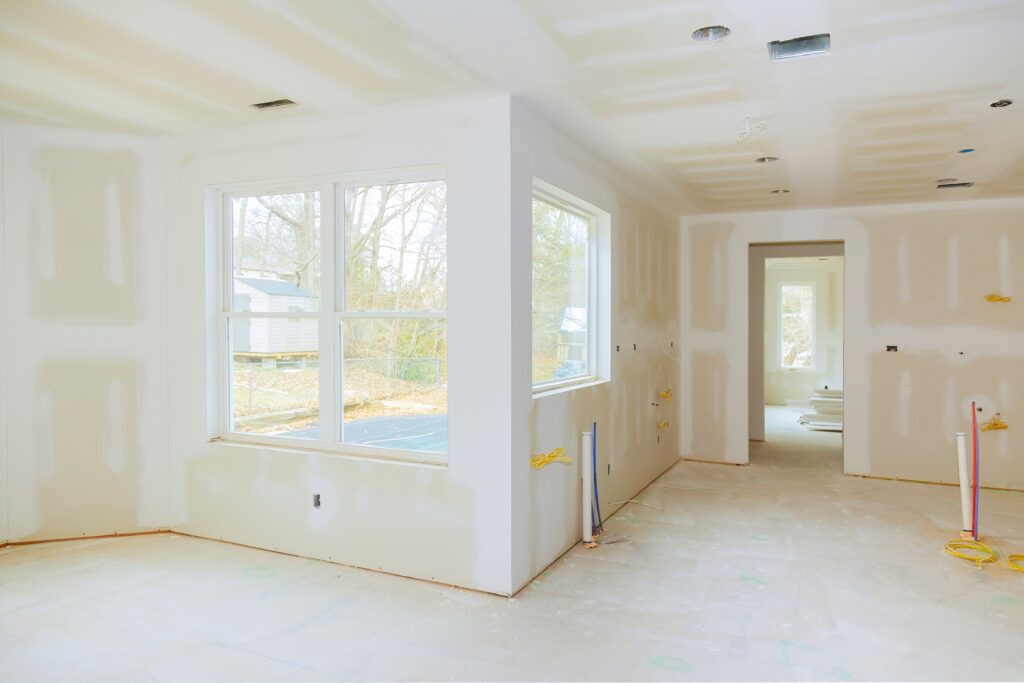Top 6 Common Home Renovation Myths Debunked

- Written by: jlbmdev

Embarking on a home renovation project can be exciting. It’s a chance to transform your living space, increase functionality, and possibly add value to your property. The Joint Center for Housing Centers of Harvard University (JCHS), estimates people will spend around $485 billion on home improvement projects in 2024.
However, the world of renovations can also be riddled with misinformation. Unrealistic expectations and misguided decisions based on common misconceptions can lead to stress, budget overruns, and even safety hazards.
In this blog, we’ll go over the top 6 common home renovation myths to provide clear explanations and practical advice to help you make informed decisions throughout your renovation journey.

While saving money by going completely DIY is tempting, it’s important to consider the hidden costs involved, like needing specialized tools, factoring in wasted materials due to inexperience, and spending time learning new skills. Professional contractors often have access to discounted bulk materials and the right equipment, allowing them to work efficiently. Hiring a professional can save you time, money, and a lot of frustration.
However, smaller DIY projects like painting or replacing hardware are perfect for a hands-on approach, especially if you’re comfortable with basic tools. You could also try demolition work as long as safety precautions are taken and you know where electrical lines, plumbing, and structural elements are located.
It’s no secret that some home renovations can increase your home’s market value. But not every dollar you spend impacts your home’s value. If your roof leaks, for example, a replacement will simply bring it up to the minimum standard expected by most buyers.
Or if you’re thinking of adding a pool, consider the location. If you live in a warm part of the country, a pool may help but in the Midwest or on the East Coast, pools can be a negative to homebuyers. They cost a lot to maintain over the winter and some home buyers just don’t want one.
There is a common belief that if something is energy-efficient or has the Energy Star certification, it’s automatically more expensive. While this might be true in some circumstances, it’s not always the case in home remodels.
For example, let’s look at windows and window materials. Vinyl windows provide excellent insulation and are durable. They are also among the most affordable replacement window options. Wood, while a good insulator, is susceptible to rot, pests, and other issues that can shorten its lifespan. It’s also one of the most expensive materials for replacement windows.
In this case, while vinyl might not be the eco-friendly option, it’s the most energy-efficient and affordable option.
It’s true that for most minor renovation projects, you don’t need a permit. Things like painting, installing new cabinetry, laying new flooring, and even repaving your driveway are all projects that you can usually do without needing a permit.
Large projects like adding on a room, knocking down walls, or installing new piping are common renovations that typically require a permit, although there are many more. Municipalities require permits for several reasons, primarily to ensure work is done safely and that the appropriate materials are used.
Always check with municipal authorities before you start a large home remodel.
Being flexible in a home remodel is essential since you don’t know what you might find when demolition begins, like broken floorboards under the carpet.
However, starting a project without a plan in place makes your remodel harder. No matter the size of your project, you’ll want an idea about the budget, supplies needed, and your process, so you’ll have a vision of the result. That way, when unanticipated problems happen, you’ll have a plan to keep you focused.
Having a renovation plan helps make your home remodel a success by helping you navigate the complexities of the project and stay on budget. You’ll know exactly what areas you’re working on and won’t be distracted by adding any side projects that could go over your budget.
You’ll also be able to plan out your materials and only buy what you’ll use. While having some extra is good in case of mistakes, there’s no reason to buy double what you need. By planning and measuring, you can buy exactly enough materials and stay within budget.
These home improvement myths are more complicated since both can be true and both can be false. There are a lot of unknowns when it comes to remodeling a home. You might’ve heard on home improvement shows that “you never know what you’re going to find until you start demolition” and that’s true. You can have a detailed plan but have it be ruined by something going wrong. On the other hand, you could have a renovation that goes smoothly and has no problems at all.
Generally, it typically takes several months to complete an extensive remodel of an entire house if all goes well. A good contractor can do the work quicker and more efficiently than you can, so it’s best not to try anything you might not be able to complete. This will help you stay on budget and schedule.

Between blogs and Pinterest boards, there are hundreds if not thousands of home remodeling tips out there. It’s hard to know what’s right with all the conflicting information you see. That’s why selecting the correct people to work with, like hiring your contractor, is essential.
At J&L Building Materials, our staff is trained to help you and your contractor navigate these common home renovation myths. We can steer you towards the best home improvement products for the job or if once you realize that your DIY skills aren’t up to the task, we can help you connect with the right contractor so your project goes as smoothly as a home remodel can.